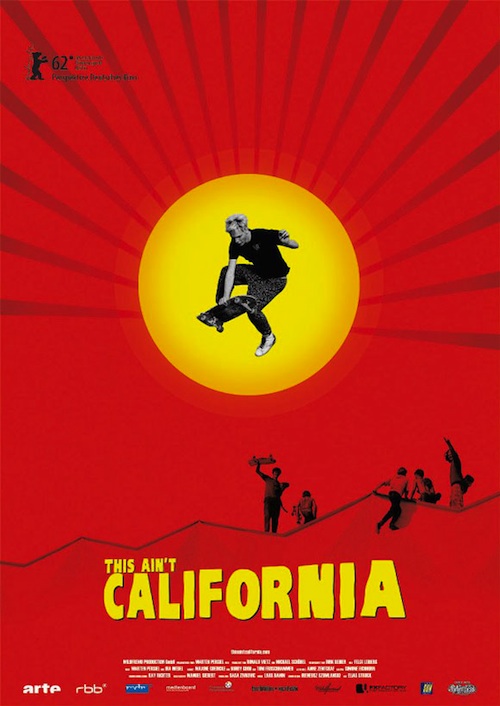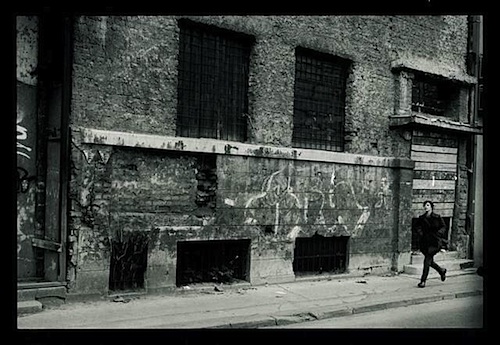By Joe Bendel. The architecture of East Berlin was a crime against art. Yet, for skateboarders, all that monstrous concrete was practically a workers’ paradise. The East German skater subculture gets the full documentary treatment and then some in Marten Persiel’s This Ain’t California, which opens this Friday in New York.
Athletics were a big deal in the GDR, but a scruffy skateboarder like Denis “Panik” Paraceck was nobody’s idea of a Katarina Witt. He was supposed to be an Olympic swimmer, but his rebellious nature and flair for daredevil stunts drew him to the skater scene. Although the Stasi constantly spied on Paraceck and his cronies, the East German sports bureaucracy eventually tried to co-opt the movement when they discovered the burgeoning sport had its own circuit of international competitions. It seems Paraceck initially tried to play ball, but he quickly chafed under their authority. However, there is also a strong likelihood he never existed in the first place.
 While TAC is structured as an elegy to Paraceck, a little digging raised serious questions about the film’s cross-its-heart-and-swear-to-die veracity. Evidently, Persiel now uses the term “documentary tale” and speaks of the broadening meaning for the genre. This is not an isolated case. After garnering considerable festival attention, Michal Marczak admitted At the Edge of Russia was kind of, you know, staged. (Considering I noted how surprising it was Russia granted a Polish filmmaker access to a remote military base as well as the cinematic look of his subjects, I would argue my review holds up pretty well in retrospect).
While TAC is structured as an elegy to Paraceck, a little digging raised serious questions about the film’s cross-its-heart-and-swear-to-die veracity. Evidently, Persiel now uses the term “documentary tale” and speaks of the broadening meaning for the genre. This is not an isolated case. After garnering considerable festival attention, Michal Marczak admitted At the Edge of Russia was kind of, you know, staged. (Considering I noted how surprising it was Russia granted a Polish filmmaker access to a remote military base as well as the cinematic look of his subjects, I would argue my review holds up pretty well in retrospect).
Regardless, the underground East German skater community is an established fact. It seems safe to assume they were on the business end of Stasi surveillance and the PR conscious Party probably did try to recruit them for propaganda purposes. As for the rest of TAC, you tell me.
In fact, some of the animated interludes are obviously intended to instill a fable-like vibe. Had Paraceck really burned down the GDR’s skater training facilities, it is doubtful he would have lived to see unification. Rather, Paraceck functions as a scapegoat-like creation myth of unification. Supposedly locked in a Stasi prison cell when the wall came down, he missed all the festivities. By the time he was released, Persiel and their cohorts had already moved on with their unified lives, leaving him behind.
There is definitely a measure of truth to TAC, but it is a fair question to ask how much. If nothing else, Persiel captures the milieu of the GDR era. Paraceck or those for whom he serves as a composite did not want to become political activists. Nonetheless, they became de-facto dissidents simply by careening about atop a small board with wheels. Visually striking, TAC combines talking head reminiscences, stark animated sequences, and some impressive archival skating footage (that may well have been recreated by Persiel and a cast of contemporary skaters). Recommended for those fascinated by the failed Communist experience (but as what I have no idea), This Ain’t California opens this Friday (4/12) in New York at the Maysles Institute Cinema.
LFM GRADE: B
Posted on April 8th, 2013 at 9:11am.


